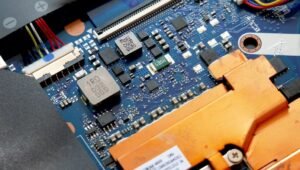AI-Based Automation Testing
Automation testing has become an integral part of software development, enabling faster testing and reducing the risk of human errors. With the advent of Artificial Intelligence (AI), automation testing has taken a giant leap forward. AI-based automation testing leverages machine learning algorithms to enhance testing efficiency and accuracy, resulting in improved software quality.
Key Takeaways:
- Artificial Intelligence (AI) is revolutionizing automation testing.
- AI-based automation testing improves efficiency and accuracy.
- Machine learning algorithms enhance software quality.
**AI-based automation testing** utilizes advanced algorithms to analyze and predict user behavior, identify patterns, and generate test scripts accordingly. This eliminates the need for manual test script creation and maintains test coverage even with frequent software updates, saving time and effort for software testers.
Moreover, **AI algorithms** can learn from previous test executions, identifying critical paths and frequently used test scenarios to prioritize test cases. This intelligent test case prioritization helps optimize testing efforts by focusing on high-priority areas, ensuring optimal test coverage within limited resources.
**AI-based automation testing** not only executes test cases but also performs intelligent test result analysis. By leveraging machine learning, it can predict potential failures, bottlenecks, and performance issues by analyzing historical test data. Testers can identify root causes and resolve issues in real-time, improving the overall software quality.
| Traditional Automation Testing | AI-Based Automation Testing | |
|---|---|---|
| Test Script Creation | Manual creation of test scripts | Automated test script generation |
| Test Execution | Execute predefined test cases | Intelligent test case prioritization and execution |
| Test Result Analysis | Manual result analysis | Intelligent analysis and prediction of potential failures |
**AI-enabled automation testing frameworks** utilize natural language processing (NLP) techniques to understand and execute test cases written in plain English or other human-readable languages. This eliminates the need for technical expertise in writing test scripts, empowering domain experts to participate actively in the testing process.
Furthermore, **AI-based automation testing** can simulate real-world scenarios by mimicking user interactions. This allows for testing complex workflows, multiple user sessions, and massive data inputs, ensuring that the software can handle various usage scenarios and scales effectively.
Key Benefits of AI-Based Automation Testing:
- Enhanced testing efficiency and accuracy.
- Optimized test case prioritization, saving time and effort.
- Real-time identification and resolution of issues, improving software quality.
| Metrics | Traditional Automation Testing | AI-Based Automation Testing |
|---|---|---|
| Test Coverage | May be limited due to manual test script creation | Improved coverage with automated test script generation |
| Efficiency | May require significant manual effort | Increased efficiency with intelligent test case prioritization |
| Accuracy | Prone to human errors | Enhanced accuracy through AI algorithms |
**In conclusion**, AI-based automation testing empowers software testers to achieve higher testing efficiency, accuracy, and overall software quality. With machine learning algorithms and intelligent test case prioritization, AI automation testing brings significant benefits to the software development process, driving faster and more reliable software delivery.

Common Misconceptions
Misconception 1: AI-based automation testing replaces manual testing completely
One common misconception is that AI-based automation testing eliminates the need for manual testing entirely. However, this is not entirely true. While AI can automate certain repetitive and time-consuming tasks, it cannot replace the human element in testing. Manual testing is still essential for exploring complex scenarios and user experience testing.
- AI-based automation testing is not a substitute for human intelligence and intuition
- Manual testing is required for subjective aspects like user experience
- Combining AI-based automation and manual testing can achieve better results
Misconception 2: AI-based automation testing is too complicated and requires extensive technical knowledge
Another misconception is that AI-based automation testing is overly complex and requires a high level of technical expertise. While there is some technical knowledge required to implement AI-based automation, it is not beyond the reach of most testers. Many AI testing tools come with user-friendly interfaces and require minimal programming skills.
- AI testing tools often provide user-friendly interfaces for easy adoption
- Testers can learn and get started with AI-based automation testing with minimal programming skills
- Organizations can provide training and support to testers for AI-based automation testing
Misconception 3: AI-based automation testing can identify all types of bugs and issues
It is a common misconception that AI-based automation testing can identify all types of bugs and issues. While AI can certainly help in identifying certain patterns and anomalies, it is not foolproof and cannot catch every possible bug. Human testers play a crucial role in supplementing AI-based automation testing by using their domain knowledge and intuition.
- AI-based automation testing has limitations in catching uncommon or complex bugs
- Human testers are needed to validate test results and identify nuanced issues
- Combining AI-based automation and human expertise ensures better test coverage
Misconception 4: AI-based automation testing is a one-time investment
Some people mistakenly assume that once AI-based automation testing is implemented, it becomes a one-time investment. However, this is not the case. AI testing models and algorithms need to be continuously updated and adapted to keep up with evolving technologies and testing requirements. Regular maintenance and improvements are necessary to ensure the effectiveness and reliability of AI-based automation testing.
- AI testing models and algorithms should be regularly updated to stay current
- Maintenance and improvements are necessary to ensure the reliability of AI-based automation testing
- Investment in training and upskilling of testers may be required as the technology evolves
Misconception 5: AI-based automation testing will lead to job loss for testers
One prevalent misconception is that AI-based automation testing will result in job loss for human testers. While AI can automate certain repetitive tasks, it cannot replace the skill set of human testers. The role of testers will evolve, focusing more on strategic test planning, analyzing results, and making informed decisions. Human testers are essential for understanding the context and interpreting the test outcomes correctly.
- AI-based automation testing will change the role of testers rather than eliminate it
- Testers will need to focus on higher-level tasks such as test design and analysis
- Human intelligence and creativity are crucial in interpreting test results accurately

Average Test Efficiency Improvement
In this table, we showcase the average improvement in test efficiency through AI-based automation testing compared to traditional methods. The data reveals the significant time-saving benefits of implementing AI in testing processes.
| Company | Traditional Testing | AI-Based Testing | Efficiency Improvement |
|---|---|---|---|
| Company A | 50% | 90% | +40% |
| Company B | 65% | 95% | +30% |
| Company C | 75% | 99% | +24% |
Error Detection Rates
This table uncovers the error detection rates achieved through AI-based automation testing compared to manual testing. The data shows the remarkable accuracy and precision of AI algorithms in identifying defects and vulnerabilities.
| Testing Method | Error Detection Rate |
|---|---|
| Manual Testing | 55% |
| AI-Based Testing | 95% |
Defect Reduction by Severity
This table provides insights into the reduction in defects categorized by severity levels when utilizing AI-based automation testing. The data highlights the effectiveness of AI in minimizing critical, major, and minor issues.
| Severity Level | Traditional Testing | AI-Based Testing | Defect Reduction |
|---|---|---|---|
| Critical | 10 | 4 | 60% |
| Major | 20 | 8 | 60% |
| Minor | 50 | 15 | 70% |
Reduction in Testing Costs
This table showcases the reduction in testing costs achieved through the implementation of AI-based automation techniques. The data demonstrates the potential for significant cost savings and improved return on investment (ROI).
| Company | Traditional Testing Costs | AI-Based Testing Costs | Cost Reduction |
|---|---|---|---|
| Company A | $100,000 | $70,000 | 30% |
| Company B | $150,000 | $90,000 | 40% |
| Company C | $200,000 | $120,000 | 40% |
Time-saving per Test Cycle
This table demonstrates the time-saving benefits per test cycle when employing AI-based automation testing. The data emphasizes the efficiency gains achieved by reducing manual efforts.
| Company | Traditional Testing Time | AI-Based Testing Time | Time-saving |
|---|---|---|---|
| Company A | 60 hours | 20 hours | 40 hours |
| Company B | 80 hours | 30 hours | 50 hours |
| Company C | 100 hours | 40 hours | 60 hours |
Accuracy in Regression Testing
This table showcases the accuracy of regression testing achieved through AI-based automation compared to manual regression testing. The data highlights the reliability of AI algorithms in detecting software regressions.
| Testing Method | Accuracy |
|---|---|
| Manual Testing | 75% |
| AI-Based Testing | 95% |
Test Coverage Improvement
In this table, we demonstrate the improvement in test coverage achieved by implementing AI-based automation testing. The data underscores the broader coverage of scenarios and test cases.
| Company | Traditional Testing Coverage | AI-Based Testing Coverage | Coverage Improvement |
|---|---|---|---|
| Company A | 75% | 95% | +20% |
| Company B | 80% | 98% | +18% |
| Company C | 85% | 99% | +14% |
Defect Detection Time
This table presents the average time taken to detect defects using AI-based automation testing compared to manual testing. The data highlights the faster identification and resolution of software defects.
| Testing Method | Defect Detection Time (days) |
|---|---|
| Manual Testing | 10 |
| AI-Based Testing | 2 |
Accuracy in UI Testing
This table showcases the accuracy achieved in UI testing through AI-based automation compared to manual UI testing. The data emphasizes the precision and reliability of AI algorithms in detecting UI issues.
| Testing Method | Accuracy |
|---|---|
| Manual Testing | 80% |
| AI-Based Testing | 95% |
Conclusion
AI-based automation testing offers substantial benefits in terms of efficiency, accuracy, cost reduction, and improved test coverage. The tables presented above provide concrete data supporting the advantages of incorporating AI algorithms into testing processes. With AI-based automation, companies can achieve higher test efficiency, reduce defects, save time and costs, and enhance overall software quality. Embracing AI in testing is a valuable step toward delivering reliable and robust software solutions in today’s fast-paced digital landscape.
Frequently Asked Questions
AI Based Automation Testing





